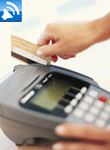 As new technologies evolve in the retail marketplace, retailers and consumers alike must adjust to new ideas and opportunities that have the potential to change the way they do business. Currently, many retailers are preparing for an advent of new payment options. Mobile payments are evolving rapidly and in the coming years are expected to be a commonly utilized alternative to cash, checks and credit cards. However, just as the onset of online banking and billing faced security challenges and setbacks in its early days, so will the new payment technologies in retail.
As new technologies evolve in the retail marketplace, retailers and consumers alike must adjust to new ideas and opportunities that have the potential to change the way they do business. Currently, many retailers are preparing for an advent of new payment options. Mobile payments are evolving rapidly and in the coming years are expected to be a commonly utilized alternative to cash, checks and credit cards. However, just as the onset of online banking and billing faced security challenges and setbacks in its early days, so will the new payment technologies in retail.
According to the 2011 Mobile Payments Global Survey by KPMG, the majority of companies think that mobile payments will become mainstream in the next five years. These new technologies include mobile wallets, mobile banking and contactless card systems. The study, which surveyed nearly 1,000 companies across the world, noted that while convenience will foster growth, security will impede adoption. In fact, 71 percent of respondents said that security is the main challenge companies face as they develop mobile payment strategies. Retailers will need to proactively prepare to meet these challenges, especially when it comes to loss prevention.
Technology Faces Security Challenges
New technologies will come and go, opening new windows of opportunity for theft, fraud and loss. Yet the precise ways in which shrink will manifest itself is often revealed only with time and experience. This presents a challenge to loss prevention (LP) professionals who are already grappling with the best way to shut off dozens of other sources of shrink. No matter the technology being adopted, the best practices are simple. LPs have to be given the opportunity to evaluate a new technology, anticipate challenges, and mitigate risks. This includes, giving the LP a seat at the decision and planning table. It is critical that LP professionals have a seat at the table any time a new store technology is planned for implementation. LPs can see the technology in the lab and beta environments, collecting valuable insight into the possible losses that may be triggered. It also gives them a chance to understand the processes that will need to be created to mitigate risks and losses, as well as metrics that will need to be monitored to determine if losses are stemming from the new technology. Self checkout is an example of a technology that many retailers have deployed to enhance customer experience and efficiency, but also introduces risks associated with loss. LP should be involved early during the proof of concept phase.
To read more about the steps retailers can take to ensure LPs can do their job in helping with a smoother and safer transition into new technologies, check back in March. Read more articles on loss prevention.
